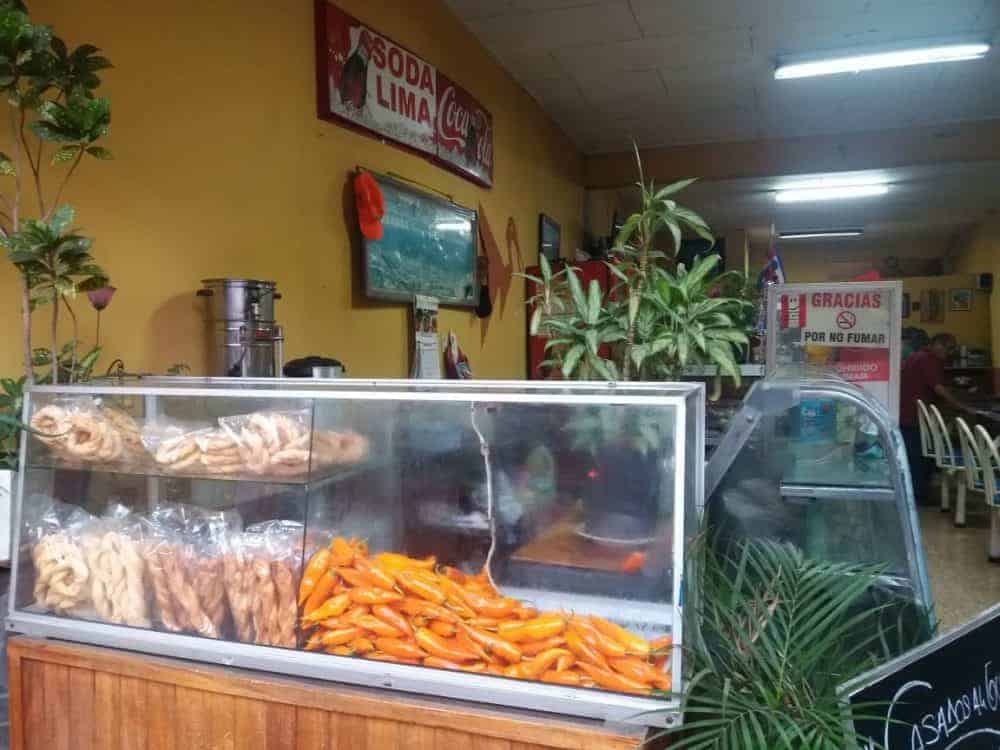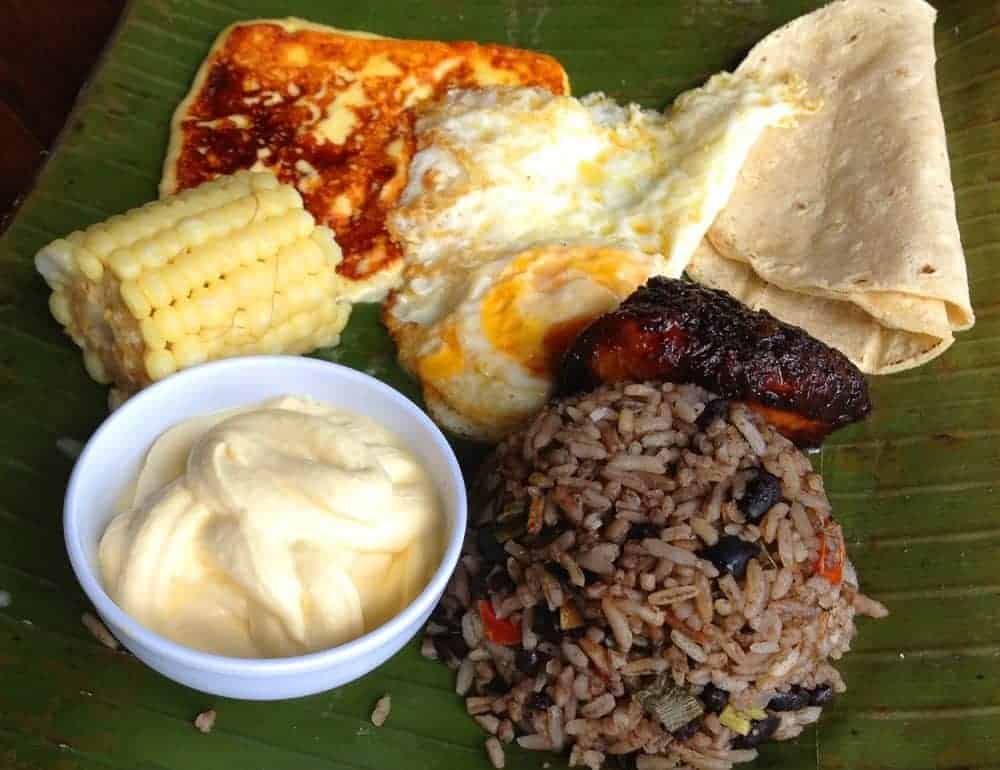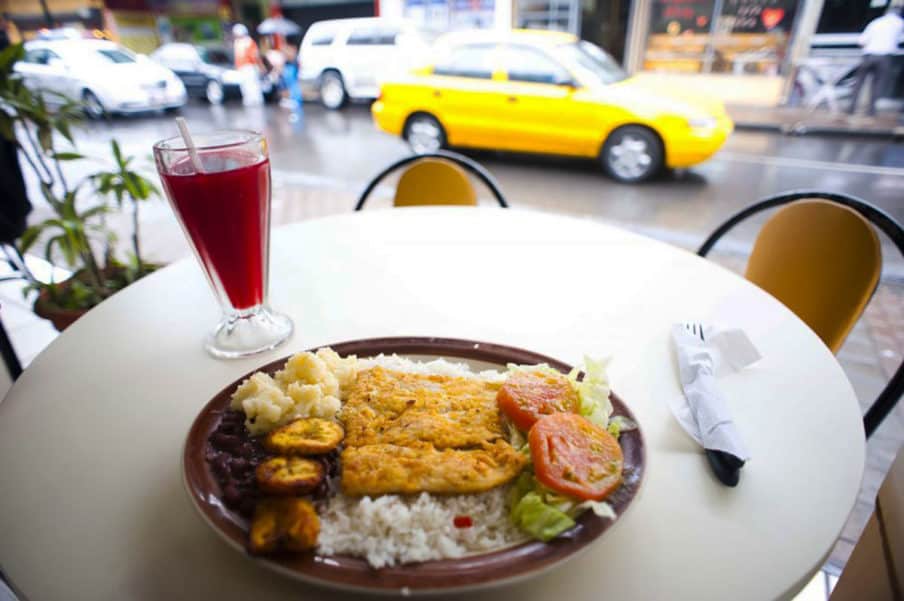
In Costa Rica, the term “soda” doesn’t refer to a fizzy drink but to a local restaurant that serves as the heartbeat of community dining. These family-run, open-air establishments dish out traditional Costa Rican cuisine, offering a window into the country’s culture, hospitality, and flavors. Found in nearly every town, from bustling San José to sleepy coastal villages, sodas are where locals gather and travelers can savor authentic, affordable meals.
If you’re planning a trip to Costa Rica and want to eat like a Tico (the local term for Costa Ricans), sodas are the place to start. This guide explores what makes sodas special, what you’ll find on the menu, and why they’re a must-visit for any traveler.
What Is a Costa Rican Soda?
A soda is a small, often family-owned restaurant that specializes in “comida típica,” or traditional Costa Rican food. Picture a casual, open-air setup with plastic chairs, checkered tablecloths, and the aroma of simmering rice and beans wafting from the kitchen. Staffed by family members, sodas feel like an extension of a Tico home, where recipes are passed down through generations. They’re known for hearty portions, low prices—think a full meal for $5–$8 USD—and a welcoming vibe that encourages chats with locals or fellow diners. Unlike touristy restaurants, sodas prioritize fresh, local ingredients, reflecting Costa Rica’s agricultural roots and laid-back “Pura Vida” lifestyle.
Sodas are more than just places to eat; they’re cultural hubs where daily life unfolds. You might see construction workers grabbing a quick casado at lunch, families sharing empanadas, or friends lingering over coffee. This authenticity makes sodas a favorite among travelers seeking to connect with Costa Rica’s traditions and people. Whether you’re in a mountain town or a beachside village, a soda offers a taste of the country’s soul.
Why You Should Eat at a Soda

Dining at a soda is one of the best ways to immerse yourself in Costa Rican culture while keeping your travel budget in check. These restaurants stand out for their affordability, homemade meals, and community atmosphere.
A typical meal, like the beloved casado, includes rice, beans, a protein, and sides, often paired with a refreshing fruit juice for less than what you’d spend on a fast-food combo back home. This value doesn’t come at the expense of quality—sodas pride themselves on fresh, locally sourced ingredients, from tropical fruits to just-caught fish on the coast.
The homemade nature of soda meals adds a personal touch that’s hard to find in upscale restaurants. Many dishes are prepared using family recipes, giving you a taste of what Ticos eat at home. For travelers tired of generic resort fare, sodas offer comfort food with a Costa Rican twist, like a warm bowl of olla de carne or crispy patacones. The open-air setting also lets you soak in the local scene, whether it’s the chatter of neighbors or the hum of a nearby market. Eating at a soda isn’t just about the food—it’s about feeling like part of the community, even if just for a meal.
Where to Find Sodas in Costa Rica
Sodas are as common in Costa Rica as palm trees, popping up in every corner of the country. You’ll spot them in urban centers like San José, small towns like La Fortuna, and even remote areas along winding jungle roads. They’re often tucked into marketplaces, near town squares, or close to churches, where locals naturally congregate. Some are roadside gems with hand-painted signs, while others are hidden on side streets, rewarding adventurous eaters with the best flavors. In coastal areas, sodas often specialize in seafood, while highland sodas might feature heartier stews suited to cooler climates.
Finding a soda is easy—look for a casual setup with locals enjoying plates piled high with food. If you’re unsure where to start, ask a local for their favorite spot; Ticos are proud of their sodas and happy to share recommendations. Many sodas operate from breakfast through late afternoon, though some stay open for dinner, especially in busier towns. No matter where you are, a soda is never far away, ready to serve up a taste of Costa Rica.
What’s on the Menu at a Costa Rican Soda?

Soda menus revolve around comida típica, emphasizing rice, beans, plantains, and fresh produce, with influences from indigenous, Spanish, and Afro-Caribbean cuisines. These dishes are mild yet flavorful, often seasoned with herbs like cilantro and the iconic Salsa Lizano, a tangy condiment found on every table. Most sodas offer a mix of sit-down meals and grab-and-go options, paired with drinks that highlight Costa Rica’s abundant fruits. Below is a table summarizing some of the most popular dishes and drinks you’ll encounter:
| Dish/Drink | Description | Typical Price (USD) | When It’s Served |
|---|---|---|---|
| Gallo Pinto | A breakfast staple of rice and black beans mixed with onions, peppers, cilantro, and Salsa Lizano, often served with eggs, sour cream, or cheese. | $3–$5 | Breakfast, sometimes lunch/dinner |
| Casado | A hearty lunch plate with rice, beans, a choice of meat (chicken, pork, beef, or fish), fried plantains, salad, and sometimes picadillo (vegetable medley). | $5–$8 | Lunch, dinner |
| Empanadas | Deep-fried pastries filled with chicken, beef, pork, beans, cheese, or vegetables, perfect for a quick snack. | $1–$2 | All day |
| Patacones | Fried, smashed green plantains served as a side or with bean dip or guacamole. | $2–$4 | All day |
| Olla de Carne | A beef stew with yucca, potatoes, corn, carrots, and plantains, ideal for rainy days. | $5–$7 | Lunch, dinner |
| Chorreadas | Corn pancakes made from fresh corn, served with sour cream, typically for breakfast or snacks. | $2–$4 | Breakfast, snacks |
| Naturales/Batidos | Fresh fruit juices (naturales) blended with water or milk (batidos), featuring flavors like mango, pineapple, or guanabana. | $1–$3 | All day |
| Agua Dulce | A warm drink made from raw cane sugar dissolved in water, common in the highlands. | $1–$2 | All day |
Beyond these staples, some sodas offer regional specialties. On the Caribbean coast, you might find rondón, a coconut milk-based seafood stew, or rice and beans cooked with coconut milk, reflecting Afro-Caribbean influences. In the Nicoya Peninsula, a Blue Zone known for longevity, sodas emphasize fresh vegetables and seafood. For dessert, try arroz con leche, a creamy rice pudding with cinnamon, or tres leches cake, a rich, milk-soaked treat. If you’re lucky, a soda might serve tamales during Christmas, wrapped in banana leaves and filled with cornmeal, meat, and vegetables.
Popular Sodas to Visit
While every soda has its charm, a few stand out for their food, atmosphere, or location. In La Fortuna, Soda La Casa de Ara is a local favorite, known for its vibrant Salsa Lizano and proximity to Arenal Volcano. It’s perfect for a post-hike lunch, though it gets crowded at midday. Near the La Paz Waterfall, Soda Ardilla offers Costa Rican tacos and a cozy stop for travelers exploring Alajuela’s lush landscapes.
In Monteverde, Sabor Tico is a go-to after rainforest treks, with a diverse menu featuring unique dishes like picadillo de arracache, a root vegetable sauté. These sodas, like many others, blend great food with the chance to connect with Costa Rica’s natural beauty and local life.
Tips for Enjoying a Soda Experience
To make the most of your soda visit, keep a few things in mind. First, don’t expect spicy food—Costa Rican cuisine leans mild, though you can add heat with chilera, a pickled vegetable condiment found on many tables. If you’re vegetarian or vegan, ask for a casado sin carne (without meat); most sodas are happy to accommodate.
Bring cash, as smaller sodas may not accept cards, and be prepared for a relaxed pace—Pura Vida means no rush. Finally, engage with the staff or locals; a friendly “Buenos días” can lead to tips on the best dishes or hidden gems nearby.
Why Sodas Matter to Costa Rican Culture
Sodas are more than eateries—they’re where Costa Ricans connect, share stories, and celebrate their heritage. They reflect the country’s agricultural abundance, from rice fields to tropical fruit farms, and its emphasis on community and simplicity. For travelers, sodas offer a chance to step away from tourist traps and into the rhythm of Tico life.
Whether you’re eating gallo pinto at dawn or sipping a batido under a palm tree, a soda meal is a memory you’ll carry long after your trip ends. So, next time you’re in Costa Rica, skip the resort buffet and head to a soda. Your taste buds—and your wallet—will thank you.

